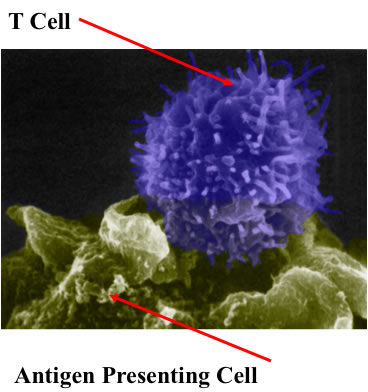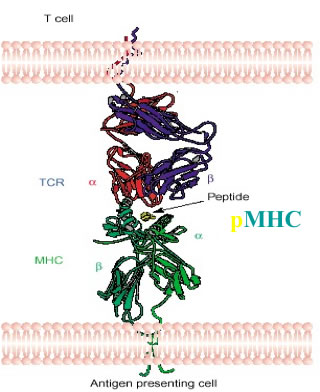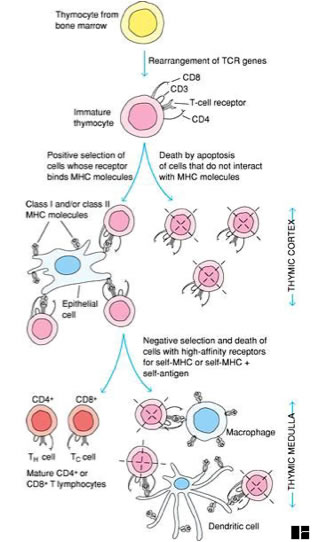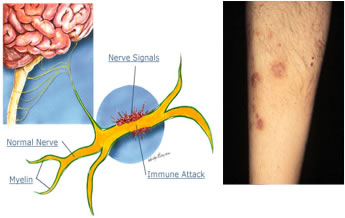Introduction
![]() The two arms of the adaptive immune system. (Overview slide from Shenshen Wang, UCLA).
The two arms of the adaptive immune system. (Overview slide from Shenshen Wang, UCLA).
Antibody-mediated immunity & T-cell mediated immunity from Blaussen videos.
![]() Affinity Maturation; generation of antibodies by B cells.
Affinity Maturation; generation of antibodies by B cells.
![]() T cells recognize (self) cells harboring pathogen:
T cells recognize (self) cells harboring pathogen:


Antigen presenting cells (APCs) internally process self and foreign proteins, cut them to short peptides (8-15 amino acids).
The peptides are presented on APC surface, attached to protein MHC.
T cell receptors (TCRs) recognize pathogen peptides by binding to them strongly.
![]() T cell receoptors (TCRs) must be
T cell receoptors (TCRs) must be
Self-tolerant: to avoid auto-immune diseases
Diverse: to recognize an evolving landscape of pathogens [V(D)J recombination] (combinatorics) (video)
Specific: to lock on specific pathogens

![]() The ensemble of T cells is shaped in the thymus gland,
The ensemble of T cells is shaped in the thymus gland,
where a diverse repertoire of thymocites (expressing distinct TCRs, produced by random recombination)
is culled by encounters with self-pMHC, via
Positive selection: TCR must bind sufficiently strongly to at least one self pMHC
(implicated in MHC restriction, and sensitivity).
Negative selection: TCR must not bind any self pMHC too strongly
(deleting autoimmune TCR).

